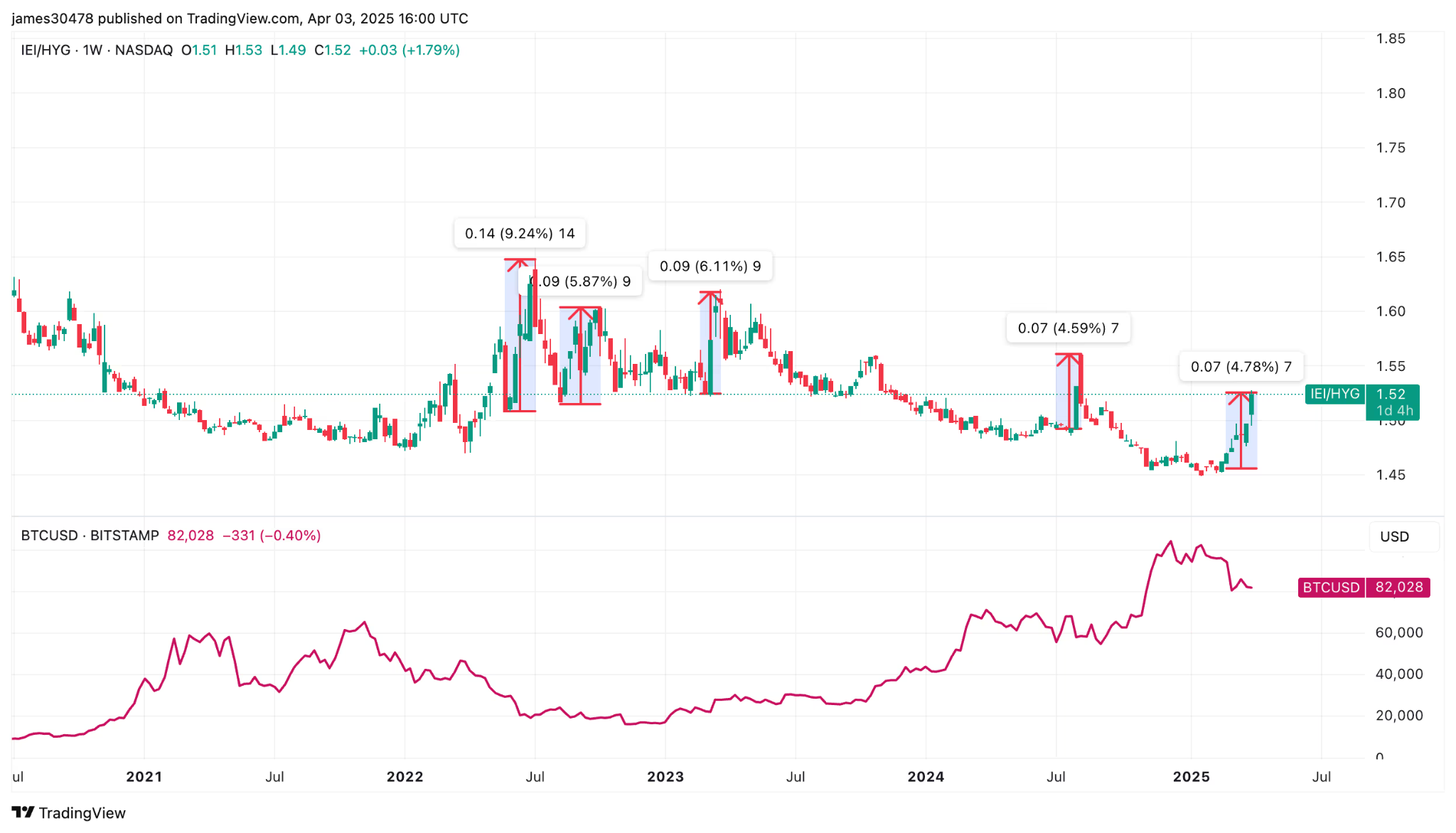Last week, the bond market sent a strong signal:
📈 The IEI/HYG credit spread ratio has surged to its largest level since the Silicon Valley Bank crisis in 2023.
According to historical experience, this often indicates:
Liquidity shrinks and risk aversion rises;
Risk assets, including Bitcoin, typically follow suit.
But this time it’s different—
Bitcoin did not fall synchronously, but instead showed a resilient trend.
🔍 What does this mean? WebSea explains:
1️⃣ The pressure in the bond market reflects the tense real financing environment.
High-yield corporate bonds (HYG) were sold off, indicating that the market was avoiding credit risk, while government bonds (IEI) were sought after as safe-haven assets. The rise in IEI/HYG was a direct reflection of the repricing of risk premiums.

2️⃣ BTC behaves differently from traditional risky assets.
BTC, which should have been corrected, went against the trend last weekend. This "non-resonance" is worthy of vigilance and attention. It may mean that some funds in the market are repositioning the asset attributes of Bitcoin - from speculative assets to non-sovereign hedging tools in liquidity crises.
3️⃣ Is Bitcoin heading towards a paradigm shift towards “digital gold”?
If this decoupling continues, BTC could truly become an alternative safe-haven anchor in the “liquidity dilemma” of emerging market structures.
🧭 On WebSea Xiaohongshu, we will continue to track the coupling and decoupling of traditional macro indicators and on-chain markets, build a panoramic research system for Web3 investors, and help you make better decisions.
📌 The next frontier of investment is not just on-chain data, but also on-chain mapping of macro variables.
📚 Join WebSea and achieve financial freedom with us.











